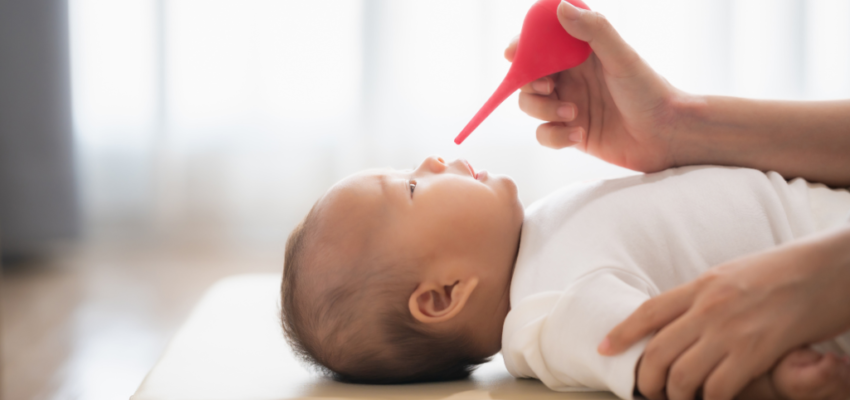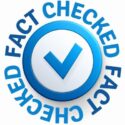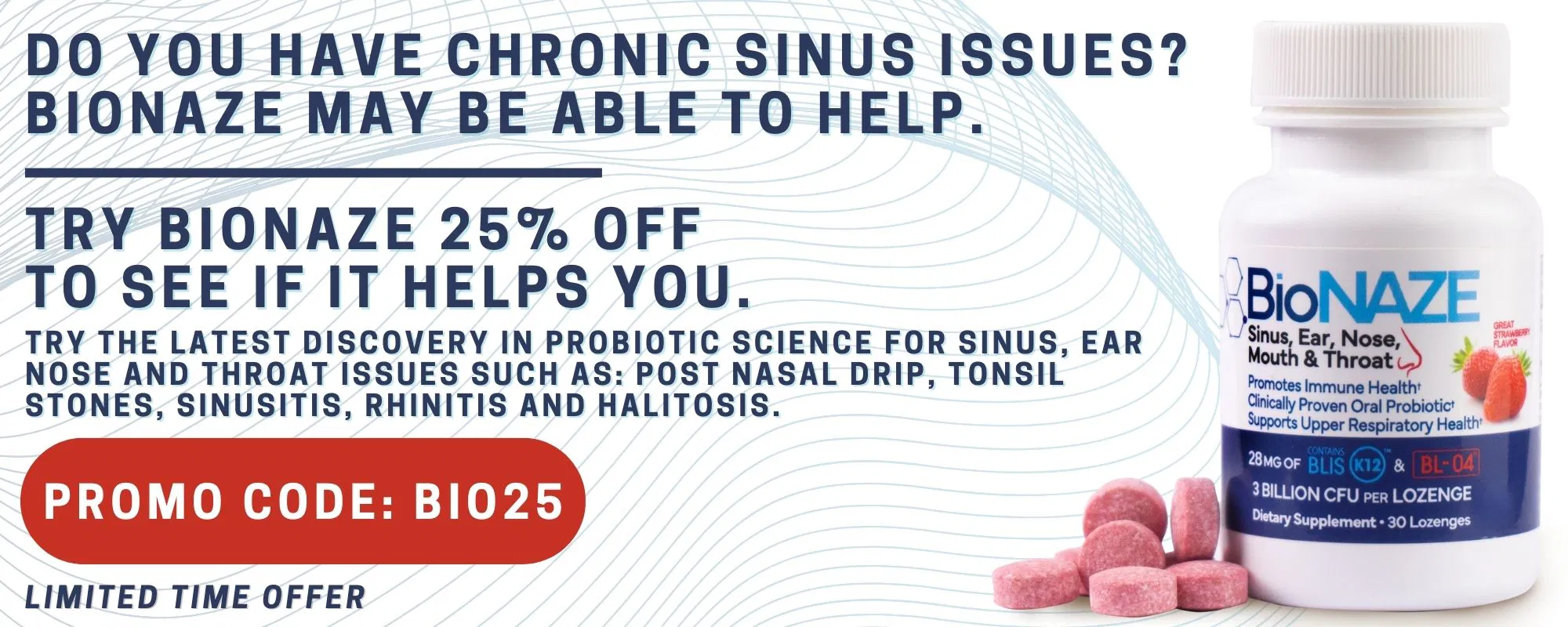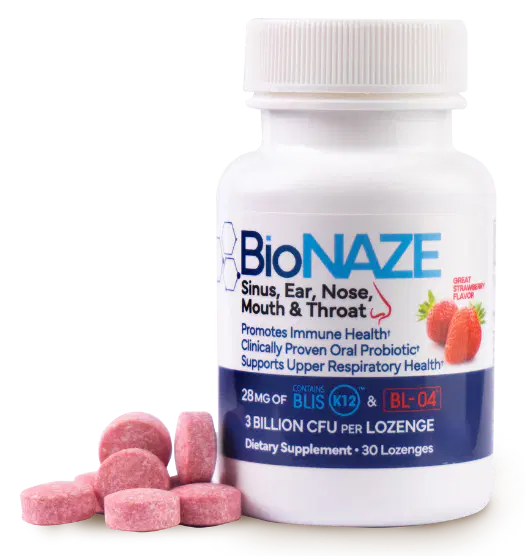How To Unblock Baby Nose Naturally: 7 Easy Home Remedies

Published December 5, 2022
A stuffy nose is usually not a big deal to adults.
However, it can be to babies, especially since they have yet to learn how to breathe through their mouths. Of course, they will learn eventually, but you’ll have to help them along the way.
Hence, you’ll likely have several sleepless nights.
Normally, the best remedy for a stuffy nose is antihistamines or decongestants. But that remedy isn’t viable for babies as these medications can cause side effects to children under two years of age.
Thankfully, there are several natural home remedies you can rely on instead.
1. Warm Baths
One of the possible causes of a stuffy nose is swollen nasal passages.
Normally, the mucus that the nasal regions produce can drain easily. However, if the passageways it usually goes through are swollen, it’d take longer to drain since mucus has much less room to move.
Of course, the mucus would still drain eventually, but you may have to exert force by blowing your nose. This remedy involving warm baths is centered on taking care of swollen nasal passages.
Heat or warmth is usually not a good remedy for swelling. But if the swelling was induced by infections, which is usually the case with congestion, applying heat to the affected area will work.
You have several ways to do this, but to babies, the gentlest way would be through warm baths.
2. Gentle Pats
Mucus is a naturally-occurring substance. The body, or to be precise, the cells that run from your airways (lungs) to the nasal passages (nose), produce a certain amount of mucus constantly.
The production of mucus is usually normal. But there are times when the cells generate an excessive amount of mucus. When that happens, the mucus will accumulate in the area where it was made.
If the mucus came from the chest area, for example, there’s likely a lot of mucus stuck in there.
This remedy is based on that scenario. Gentle pats involve patting or tapping the back of your baby to loosen the mucus that’s built up in that region so they can more easily cough them up. To do this, you simply have to lay them down across your knees, then gently path their back with a cupped hand.
3. Sinus Massage
This remedy involves massaging the sinus region or the area around the nose to hopefully loosen the mucus in that area. It’s like gentle pats in that it targets the mucus generated in the nasal regions.
To do this, you simply have to place your middle and index fingers above the baby’s eyebrows and rub that area in a circular motion. Repeat these a couple of times, but make sure you’re gentle.
It’s not necessarily the most effective method, but it’s certainly the easiest, so there’s no harm in trying.
4. Manually Wipe Away the Mucus

This remedy follows the same logic as a sinus massage in that it aims to directly get rid of the mucus. However, this approach doesn’t go about it the roundabout way. Instead, it’s more direct.
Basically, you use a dry cloth and use it to wipe away the mucus in the baby’s nose.
Note that you should only wipe away mucus located in the outer area of the infant’s nose. You mustn’t insert the cloth deep into their nose as that may lead to temporary damage instead.
If you want to remove the mucus deep inside the nose as well, you’ll have to use another method.
5. Gentle Suction With Bulb Syringe
Gentle suction is the perfect remedy for when you want directly get rid of the mucus built up deep inside the nose. It involves sticking a bulb syringe to the baby’s nose to suck out the mucus inside.
It’s a bit more intricate than the previous remedies, so here’s a step-by-step guide on how to do this:
- Make sure the bulb syringe is sanitized.
- Squeeze the bulb syringe to get the air out of it. Keep squeezing it.
- Gently place the tip of the bulb syringe into the baby’s nostril.
- ‘Unsqueeze’ the bulb syringe, so it sucks in the area around it. Since the bulb should be in the area where the mucus is, it will suck or pull the mucus out of the nose and into the bulb.
- Take the bulb syringe out of the nose and squeeze out the mucus onto a tissue.
- Do the same to the other nostril.
Make sure you’re gentle throughout the entire process. Keep in mind that there are times when you won’t get any mucus out of this. That’s probably because the mucus is too thick. In that case, you may have to use a saline drop to thin it out first. That should also be an excellent remedy by itself.
6. Saline Drops
One of the main causes of stuffy noses in babies is thick mucus.
Just like how mucus production is usually normal, the thickness of mucus is also typically normal, so it’s easy for the body to naturally drain them out. But there are times when the mucus is too thick.
In that case, using saline drops is an excellent remedy.
Saline drops are basically a mixture of water and salt. You can make them yourself, or you can buy them at a pharmacy or any store that sells them. Saline drops have two benefits for nasal congestion.
One, saline drops can keep the nose sanitized and reduce infection-induced swelling. Two, the mixture can make the mucus thinner by basically diluting itself with the presumably thick mucus.
For this remedy, you only have to use a syringe to get the mixture and put three to four drops into each nostril of the baby. Keep in mind that the effects of this remedy aren’t immediate, so you have to wait a while. The baby may also squeeze right after, so you have to hold their head for a minute.
7. Probiotics
Probiotics have a lot of benefits for the body. As it happens, one of those benefits is that they can help treat sinus problems, including the stuffy nose. Probiotic strains like Lactobacillus, in particular, are found to have several benefits for sinusitis. The good news is probiotics are safe for babies.
If you want to administer probiotics to your baby, you can try adding a small dose to their baby formula. That should help clear up any form of congestion, including a stuffy nose.
When To See a Doctor
There are times when a stuffy nose is only a matter of waiting it out. But there are also times when the problem is much more severe than you initially thought. In those cases, it’s best to see a pediatrician or any medical practitioner. That’s especially true when:
- your baby is younger than two months,
- your baby is obviously struggling to breathe,
- your baby has a relatively high fever, or
- it’s been over ten days since the first symptoms appeared.
Benefit From The Latest Advancements In Probiotic Science With Bionaze
Bionaze is a proprietary blend of probiotics proven to promote ear, nose, and throat health, improve digestion, and support your immune system. The active ingredients BLIS K12, and BL-04 are considered among the best probiotics according to science.
Get 25% Off Your First Order when you use BIO25 at checkout!

This Content Has Been Reviewed For Factual Accuracy
This content has undergone thorough fact-checking by our team of internal experts. Learn more about the meticulous editorial standard for our website here.
ADVERTISEMENT

About The Author
Lenard Arceo is an experienced writer who enjoys learning to code in his spare time. He has a fascination with health and nutrition and enjoys sharing his knowledge and research. He is proud of his commitment to communicating factual content that has helped his readers with life changing choices over the years.




